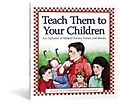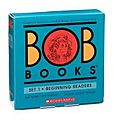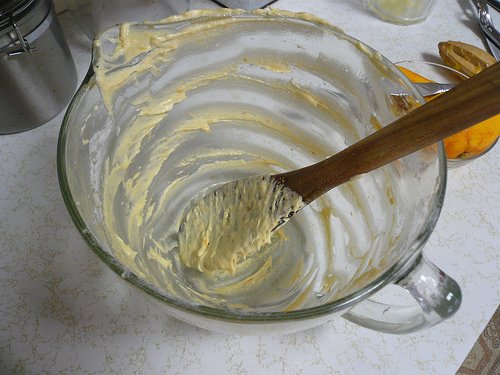Learning resources for little ones
"When are we going to do Learning Time, Mama?"
This is almost a daily question in our home, from my eager 3 1/2 year old daughter. She just adores the time that we spend each afternoon, reading, studying, discussing, creating, learning, and most of all, enjoying!
I received the sage advice early on to not focus on the academics so much, but to focus more on teaching my children to love learning, and that is just what we are seeking to do. Especially in these early years, if our daughter comes away with nothing more than a sincere enjoyment and love for learning, then we will be satisfied.
Though I am far from being an experienced home educator, I thought that some of the other young moms out there who are thinking about home schooling or are just starting as I am, might be interested to know what I am using and loving these days.
"Learning Time" as we call it in our family, is simple, relaxed, and pressure-free. It is an opportunity for me to spend purposeful time with Abbie, teaching her about God and training her in godliness, delving into good books, practicing and exposing her to skills she will need to learn, and just exploring topics that interest us. At the moment, there is no set schedule, nor workbooks to be completed, no expectations– just a lot of fun and time spent together.
In addition to using resources and books, sometimes we also just research a topic that we are interested in (such as how plants grow, as we are gardening right now), watch a brief video on animals or from Everyday News, have a calendar time (using a large, preschool style calendar), or even spend some time looking at maps. It doesn't have to be formal to be interesting and educational!
Here's what we're using and why I like it:
 Big Truths for Little Kids– I've mentioned before that we are using this to teach the catechism, and I love it! The stories are a bit advanced for my daughter (she asks to hear them but often gets bored halfway through), but the catechism questions are so worth it, as are the scripture references and discussion questions.
Big Truths for Little Kids– I've mentioned before that we are using this to teach the catechism, and I love it! The stories are a bit advanced for my daughter (she asks to hear them but often gets bored halfway through), but the catechism questions are so worth it, as are the scripture references and discussion questions.
The Three R's (previously A Home Start in Reading and Language)- These short and simple books by Ruth Beechick have helped me enormously (mine are actually the old version, which was three separate books, and I don't have the math book yet). You could do all of your basic preschool and kindergarten, even into the early elementary years using these books. Through the concepts and activities, Abbie is slowly learning how to read and I feel that I am understanding how to go about teaching reading. Love these!
 Before Five in a Row– I really enjoy the concept of this book, which is that you read the same book for 5 days in a row. Each day, you do an activity (art, science, math, language) that goes along with something in the book (for instance, in Goodnight Moon we read Bible verses about sleep, the sun and the moon, and we looked at how they use dark and light to show the transition to nighttime, and we experimented with primary colors, etc.). The only thing about this book, or it's original (Five in a Row (Five in a Row): Volume 1, for older children), is that you need to be able to access the books that it uses, either borrowing from the library, a friend, or buying them.
Before Five in a Row– I really enjoy the concept of this book, which is that you read the same book for 5 days in a row. Each day, you do an activity (art, science, math, language) that goes along with something in the book (for instance, in Goodnight Moon we read Bible verses about sleep, the sun and the moon, and we looked at how they use dark and light to show the transition to nighttime, and we experimented with primary colors, etc.). The only thing about this book, or it's original (Five in a Row (Five in a Row): Volume 1, for older children), is that you need to be able to access the books that it uses, either borrowing from the library, a friend, or buying them.
 Teach Them to Your Children– We bought this two Christmas' ago, when she was only 2. It is only now beginning to be at her level. It has 26 stories (each one has a poem that begins with a letter of the alphabet), each one intended to look at a different aspect of character and Biblical training, and includes a relevant verse as well. I find the stories can be a good starting point for discussion in an area that we are working on (telling the truth, obeying your parents, being generous, etc.).
Teach Them to Your Children– We bought this two Christmas' ago, when she was only 2. It is only now beginning to be at her level. It has 26 stories (each one has a poem that begins with a letter of the alphabet), each one intended to look at a different aspect of character and Biblical training, and includes a relevant verse as well. I find the stories can be a good starting point for discussion in an area that we are working on (telling the truth, obeying your parents, being generous, etc.).
 Slow and Steady Get Me Ready– This neat book takes you all the way from the very first week your baby is born, through to the end of their 4th year. It is meant to prepare a child with all of the skills needed for beginning school (written by a kindergarten teacher), but it is also just a fun way to work on developmental activities with your little ones. When Abbie was little, I tried to do each weekly activity, though I fell out of the habit.
Slow and Steady Get Me Ready– This neat book takes you all the way from the very first week your baby is born, through to the end of their 4th year. It is meant to prepare a child with all of the skills needed for beginning school (written by a kindergarten teacher), but it is also just a fun way to work on developmental activities with your little ones. When Abbie was little, I tried to do each weekly activity, though I fell out of the habit.
These days I sometimes use the infant activities for Caden, and get Abbie to help me with it. She is learning to serve her brother and be interested in cheering on his accomplishments, and it's good for me to spend a bit of extra attention on him (because we all know that the second child doesn't get nearly the attention that the first received!).
 The Little Hands Big Fun Craft Book– This actually a series of art books for preschoolers (we also have Alphabet Art and The Little Hands Art Book). The ideas are really simple, varied, and don't require many complex or difficult to find supplies (it's often basic art supplies or things you might have around your house). Sometimes I let Abbie flip through and choose an activity that she is interested in doing, which she loves.
The Little Hands Big Fun Craft Book– This actually a series of art books for preschoolers (we also have Alphabet Art and The Little Hands Art Book). The ideas are really simple, varied, and don't require many complex or difficult to find supplies (it's often basic art supplies or things you might have around your house). Sometimes I let Abbie flip through and choose an activity that she is interested in doing, which she loves.
 The Usborne First Thousand Words in Japanese– Because my husband and I lived in Japan for the first year of our marriage, we thought it would be fun to teach our kids Japanese. I scored this book for free from a pile of home schooling books that someone was giving away (it's actually part of a series of similar books in many different languages). It's basically a picture dictionary, and each page is a new scene (ie. the home, the kitchen, a farm, the zoo, school, etc.) and includes words appropriate to that setting. Abbie really enjoys going through it and pointing out words for me to read to her and for her to repeat.
The Usborne First Thousand Words in Japanese– Because my husband and I lived in Japan for the first year of our marriage, we thought it would be fun to teach our kids Japanese. I scored this book for free from a pile of home schooling books that someone was giving away (it's actually part of a series of similar books in many different languages). It's basically a picture dictionary, and each page is a new scene (ie. the home, the kitchen, a farm, the zoo, school, etc.) and includes words appropriate to that setting. Abbie really enjoys going through it and pointing out words for me to read to her and for her to repeat.
 Bob Books– These are very simple little books, that I wouldn't have thought much of, except that my MIL bought them for us and said they're great for kids who are learning to read. To my surprise, Abbie thinks they're great, and the simple words and short stories really appeal to her. I use these to help her practice sounding words out and recognizing words that are repeated throughout the story.
Bob Books– These are very simple little books, that I wouldn't have thought much of, except that my MIL bought them for us and said they're great for kids who are learning to read. To my surprise, Abbie thinks they're great, and the simple words and short stories really appeal to her. I use these to help her practice sounding words out and recognizing words that are repeated throughout the story.

Reading- We are currently reading the first book in the Paddington Bear series (another MIL gift- I'm not sure if I'll ever have to buy much curriculum or materials as long as she
keeps giving us so many books!).

Next, I'm eager to start the Little House on the Prairie series. I do this during our read-aloud time before naps. My MIL is a huge advocate of reading out loud to your children, even books that are above their level, because of the language exposure it gives them.
In all of this, our primary goal is to focus on learning to love God, develop character, and establish the foundations for a life of continual, purposeful learning, exploration and creativity!
Do you have any other resources to recommend for little ones? What types of things are you doing for home educating with your preschool aged children? Any wisdom from experienced moms?






Reading to your kids is indeed one of the best things you can do. I recommend having a resource on hand that guides you to the “best” books out there for kids. Not that a little Dora or Blue’s Clues every now and then is bad. But the recommended books are far more interesting for Mama to read – which is a big motivator.
We also started having the kids memorize verses when they were about 3-4 years old. I have a list of verses appropriate for preschoolers that I’d be happy to send to anyone who asks! (Contact me through the e-mail listed on my site.)
Great list of resources!
This is a book that I found amazing:
http://www.amazon.ca/Family-Virtues-Guide-Linda-Popov/dp/0452278104/ref=pd_bbs_sr_1?ie=UTF8&s=books&qid=1214136090&sr=8-1
“Family virtues Guide”. It speaks in plain language and helps each child make the right choices. Every chapter is dedicated to one virtue. They have 52 in the book, one per week. It also gives activities to do with the child with regards to the virtue.
Reading the Little House books are next in line after my Caleb and I finish Charlie and the Chocolate Factory.
We call it “learning time” as well and my daughter loves it. When we get a chance to do it that is. I think sometimes I get so overwhelmed with so much to do that I don’t just sit down and read to her. She loves reading so much and wants to read the same books over and over. I am teaching her Bible verses as well. Of course the first one we learned is “Children obey your parents for this is right” let me tell you she knows it rather well =)!
Wow- What great resources. I’ll definitely be bookmarking this. We’re still a year or two away from this stage. Right now, we have this book for Spanish: http://www.usborne.com/catalogue/browse.asp?css=1&subject=L&subcat=LS&id=1523
We’re taking a pretty laid back approach, but our daughter LOVES it- especially if she gets to “do school” with Daddy (he’s taking college Spanish right now!). 🙂
Thanks!
Michele
http://www.frugalgranola.blogspot.com
At the risk of stirring up controversy – may I suggest using nothing??!!! (Besides read alouds.)
A resource I highly recommend for parents is “The Power of Play; Learning What Comes Naturally” by David Elkind.
We simply can’t underestimate the importance of large quantities of unstructured, unscheduled play where children can explore, create, imagine, problem solve through trial and error, etc,etc…
I didn’t do any form of formal preschool with my two school aged children and they were in no way behind their peers who had formal preschooling; it was through daily interaction that they learned colours, counting, and their ABC’s. Plus lots and lots of read alouds together. (In fact, Elkind argues that by avoiding preschool and “educational toys” children will have a greater advantage in their later years.)
That said I think the relaxed approach your taking Stephanie is wonderful!
Melanie, you can come and be controversial on my blog whenever you want. 🙂
Having not read the book (and I’d like to- can I borrow it from you?), here are my thoughts (and Ryan’s) on why we’re doing what we’re doing.
We fully believe that children should have a lot of playtime, and in fact, Abbie spends the majority of her free time each day (which is quite a bit of the day) playing creatively, with dolls, animals, blocks, etc. (any kind of toy that promotes, rather than hinders, creativity and imagination).
However, the 30-45 minutes that we spend in purposeful learning time each day was started for a few reasons– I wanted a special time with her each day (esp. after a traumatic summer), she seemed to need an opportunity to be more challenged and to focus on something other than only play, and because she is extremely eager to learn and do.
Of the time that we spend, probably half of it is reading together and discussing what we are reading.
Having this time also helps me to be more intentional about character and Bible training, which I think is very important at this age (and I know that many people accomplish it without making it a specific learning time, but this is what works for me).
Lastly, since we do not plan to adhere to the age groupings of public school, we feel that there is no “right” (or wrong) age to start purposefully educating a child. Learning is a continual thing, and it is up to parents to know their particular child and when that child is ready to move from relaxed to more formal-styled education.
I can definitely see, though, the need to avoid putting pressure on young children and to not try to do all of these educational classes and videos and special toys geared to create these little Einstein babies. As well, I do not think that a child is missing out on anything important by not having more formal education until they are 5 or 6, provided that they are steeped in a rich learning environment, with lots of books and opportunities for active (not passive) play (which I’m positive is what you’ve done with your children).
Anyways, what I thought would be a short answer turned into a long one. I have much to learn about education still, and especially about how to educate my children. I will make many mistakes, of that I am sure. I appreciate the diversity of approaches, and the fact that intelligent, well-trained and godly children seem to emerge from most of them!
Thanks for the thought-provoking comment, Mel! Feel free to rebut me all you want! 🙂
No rebutals from me – I think your approach is wonderful and a great example for others to emulate! And we probably agree on a lot more than we disagree ;D. Our 2 year old is required to sit with us during family devotional time and worship – he will even try to sing along and gets melodies stuck in his head. I also anticipate that he will want to “do school too” at some point in the next year because he wants to join in with his older siblings. So I may be pulling Slow & Steady Get Me Ready off my bookshelf (I DO own a copy =D).
My suggestion wasn’t intended in any way to say doing something is wrong, just that it is a valid option to opt out of “preschool” altogether and that learning will still be accomplished.
(BTW, you are more than welcome to borrow the book. I have 1/4 more to go on it then I can pass it along.)